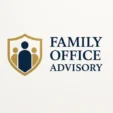Family Security & Risk Protocols #
Family security and risk protocols establish protective measures that safeguard UHNW families from physical, digital, reputational, and operational threats. Given their visibility, wealth, and global mobility, families face heightened exposure to targeted attacks, social engineering, identity theft, kidnapping risks, cybercrime, and insider threats. A structured security framework reduces vulnerabilities while enabling safe and efficient lifestyle operations.
Context & Importance #
Family offices must manage both personal and enterprise-related risks. These include threats arising from public exposure, online activity, travel, political environments, high-value assets, household staff, and relationships with advisors and vendors. Without clear security protocols, families risk financial loss, reputational harm, privacy breaches, and physical danger. A comprehensive security strategy integrates people, processes, and technology across all touchpoints.
Core Security Components #
- Physical security: Residence protection, alarms, access control, safe rooms, and security personnel.
- Digital security: Cybersecurity controls, secure communication tools, identity protection, and device management.
- Travel risk management: Pre-travel planning, geo-risk analysis, secure transportation, and emergency protocols.
- Personal privacy management: Limits on public exposure, social media guidelines, and reputation monitoring.
- Vendor & staff security: Background checks, confidentiality agreements, and behavioral monitoring.
- Crisis response: Incident procedures for kidnapping, extortion, cyber breaches, medical emergencies, and natural disasters.
- Insurance coverage: Kidnap & ransom (K&R), cyber insurance, travel insurance, and liability protection.
Family Security Protocols #
Protocols define required behaviors and decision-making rules for all family members across digital, physical, and operational contexts.
- Access control rules: Approved access lists for properties, vehicles, and secure systems.
- Social media guidelines: Restrictions on posting locations, travel plans, and sensitive personal information.
- Communication standards: Use of encrypted messaging tools, secure email, and approved devices.
- Travel procedures: Destination risk ratings, secure pickup arrangements, and real-time check-ins.
- Data handling practices: Restrictions on sharing documents or sensitive information outside approved channels.
- Visitor and vendor policies: Identification checks, escort rules, and restricted access zones.
Implementation & Best Practices #
- Perform a security risk assessment: Evaluate threats across residences, travel routes, online activity, and public exposure.
- Engage professional security firms: Use specialists for physical protection, cyber monitoring, and crisis response.
- Create a family emergency plan: Include communication trees, assembly points, and medical contacts.
- Establish confidentiality protocols: NDAs for staff, vendors, and contractors.
- Install monitoring systems: Cameras, alarm systems, cyber threat detection, and travel tracking tools.
- Train family members: Briefing sessions on cybersecurity, situational awareness, and secure behavior.
- Audit routinely: Review security systems, logs, vendor access, and policy adherence.
- Test crisis simulations: Conduct drills for cyber incidents, medical emergencies, and physical threats.
Common Challenges #
- Family members resisting security protocols due to inconvenience.
- High-profile visibility increasing threat exposure.
- Insider risks from staff, vendors, or acquaintances.
- Weak digital hygiene habits (poor passwords, unsecured devices).
- Inconsistent enforcement of rules across different locations.
- Lack of real-time visibility into travel or risk events.
See Also #
- Cybersecurity & Data Privacy Controls
- Concierge, Real Assets & Lifestyle Administration
- Travel Risk Management
- Family Governance
- Crisis Management Framework




